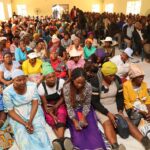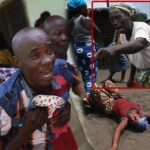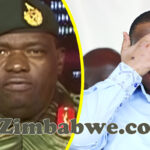Tensions between President Emmerson Mnangagwa and his deputy, Constantino Chiwenga, have been thrust into the spotlight following a series of events highlighting a growing rift within Zimbabwe’s ruling establishment.
The most recent incident involved Vice President Chiwenga’s conspicuous absence from the commissioning of the Public Service Pensions Fund’s Varsity Heights and an administration block at Chinhoyi University of Technology (CUT), despite being officially listed on the programme, New Zimbabwe has reported.
Public Service Minister July Moyo inadvertently revealed the deepening chasm during his vote of thanks at the event. He disclosed that while Chiwenga had apologised for his absence, President Mnangagwa appeared unaware of his deputy’s whereabouts.
Moyo’s words, delivered directly to Mnangagwa, were carefully chosen: “I spoke to VP Chiwenga earlier and he sent his apology that he could not attend, but he sent a message to congratulate you on this infrastructural development,” he stated while leaving the reasons for Chiwenga’s absence unexplained.
The event, held on Friday, October 4th, 2024, was attended by a number of high-profile figures, including Higher and Tertiary Education Minister Professor Amon Murwira, Justice Minister Ziyambi Ziyambi, Health Minister Douglas Mombeshora, and Mashonaland West Minister of State for Provincial Affairs and Devolution Marian Chombo, among others. The absence of Defence Minister Oppah Muchinguri-Kashiri was also noted, although Moyo explained she was in Bulawayo attending the funeral of national hero Retired Colonel Tshinga Dube.
President Mnangagwa’s own travel arrangements further fuelled speculation about heightened security concerns. Instead of his usual helicopter travel, the 82-year-old president undertook the 330-kilometre journey from Harare to Chinhoyi and back by road. This unusual choice follows a recent incident involving a helicopter that was scheduled to transport him crashing in Masvingo under suspicious circumstances.
Adding to the atmosphere of unease, a letter from Zanu PF national political commissar Munyaradzi Machacha surfaced, warning party members, particularly those within the influential District Coordinating Committees (DCCs), against fostering divisions within the party.
The DCCs play a crucial role in selecting presidential nominees for party congresses, underscoring the political significance of maintaining unity within the ruling party.
The underlying tensions appear rooted in allegations of widespread corruption and the country’s struggling economy. As previously reported by New Zimbabwe, Chiwenga’s faction is reportedly plotting to remove Mnangagwa and his allies, citing their handling of corruption and the plummeting value of the Zimbabwean dollar (ZiG) against the US dollar, which has fueled public discontent.
Despite the political undercurrents, the CUT graduation ceremony proceeded, with President Mnangagwa conferring over 3,500 diplomas and degrees, including 784 Master’s degrees, 19 Master of Philosophy degrees, and 27 Doctor of Philosophy (PhD) degrees. Among the graduates was PSC Commissioner George Antony Chigora.
CUT vice-chancellor Professor David Simbi highlighted the university’s commitment to providing education aligned with Zimbabwe’s vision of becoming a middle-income economy by 2030. He emphasized the university’s revised curriculum focusing on skills and practical competencies for goods and services production, aligning with the government’s modernisation agenda.
“From the onset of the Second Republic, the agenda of modernisation of Zimbabwe has remained topical. Your university of technology aptly embraced the country’s vision…When you laid a foundation stone at our agro-industrial park, it was an affirmation to us of your desire for a food-secure Zimbabwe, and to this end, the university’s education curriculum has been revised to meet the learning needs for programmes that impart skills and practical competences for the production of goods and services,” he stated.
The graduation ceremony, themed “Innovating for Sustainable Growth: Towards an Industrialised Zimbabwe,” concluded with President Mnangagwa’s departure, leaving the underlying political tensions simmering beneath the surface of official proceedings.
The incident at the Chinhoyi University of Technology, coupled with the president’s altered travel arrangements and the internal party warnings, paints a picture of a deeply fractured ruling party grappling with significant internal challenges.

Follow @MyZimbabweNews












